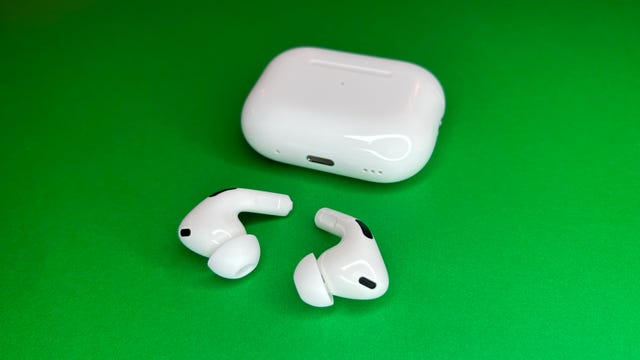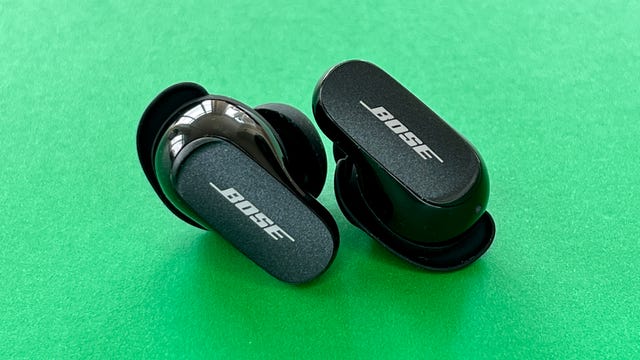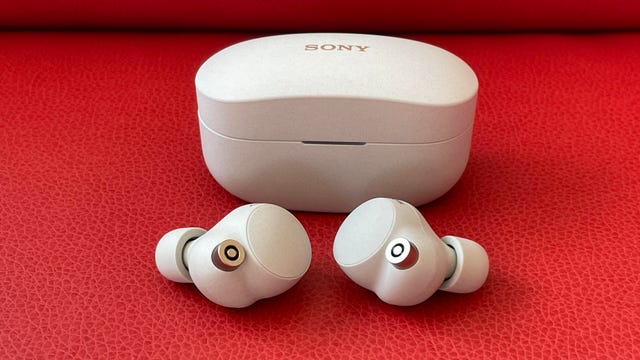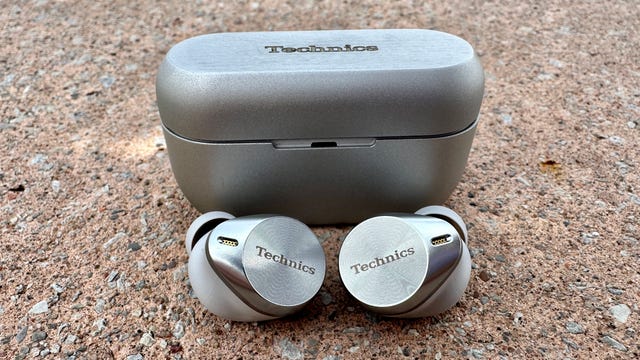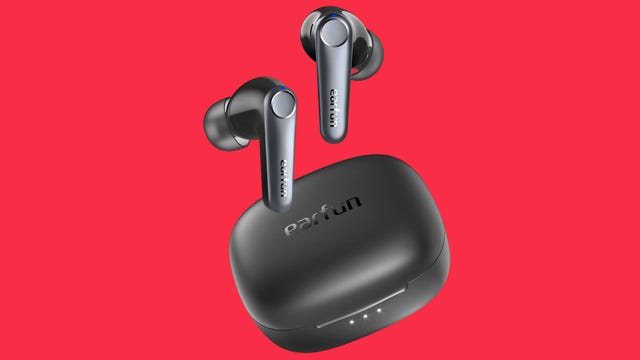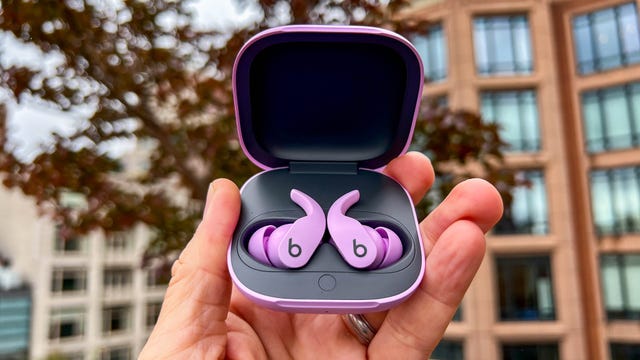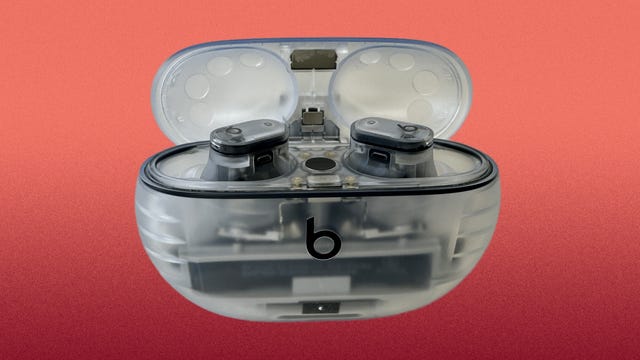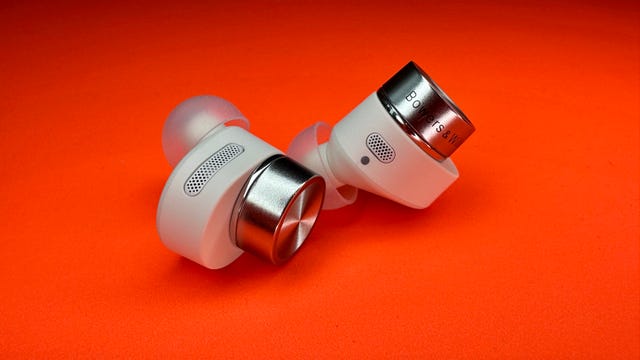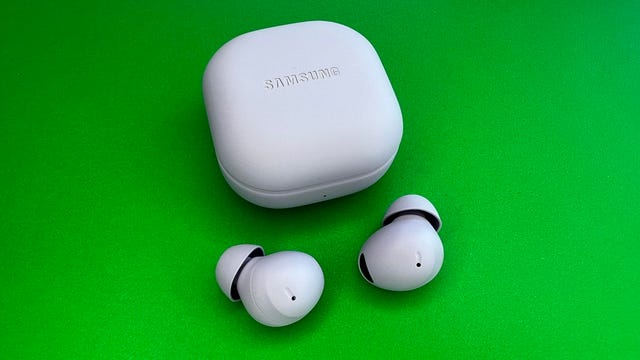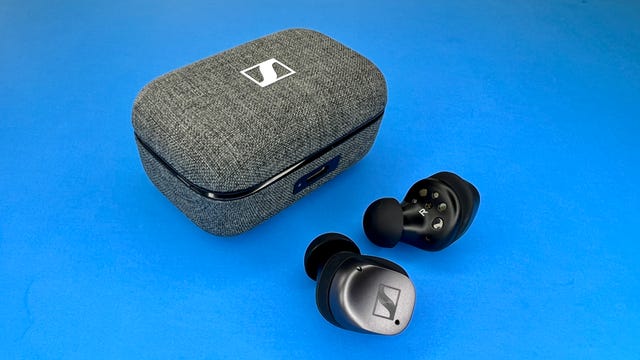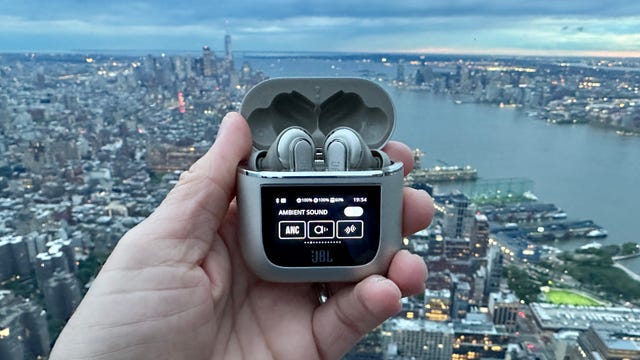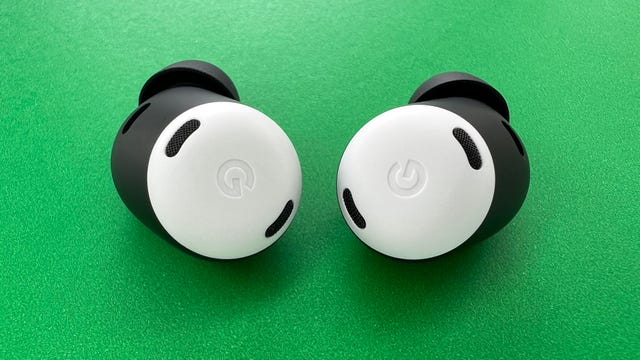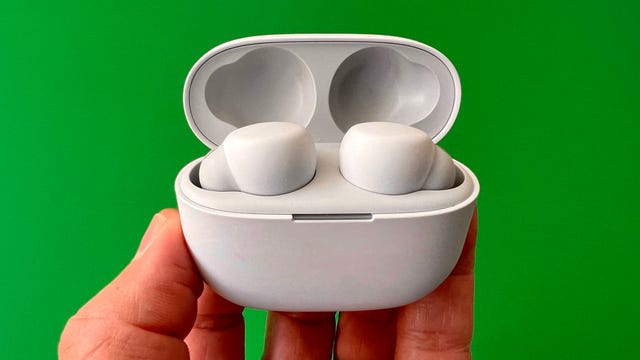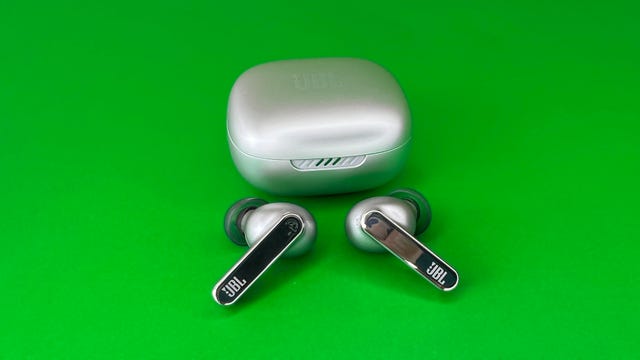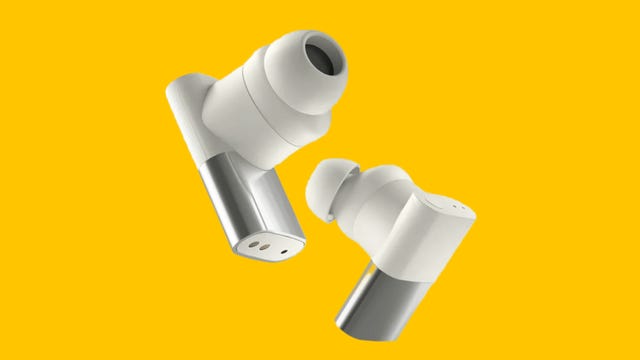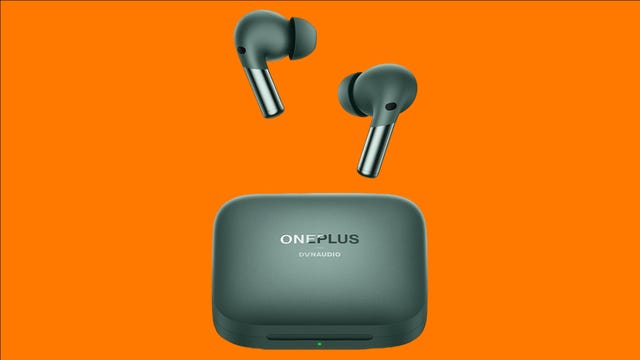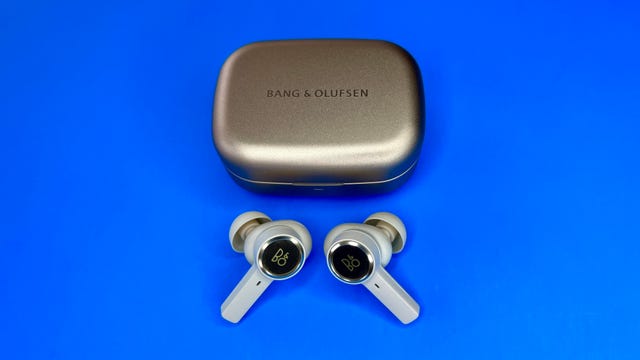In this article:
Once upon a time, active noise canceling, or ANC, was only available in a few true-wireless earbuds and those models were rather pricey. But today the majority of wireless earbuds feature active noise canceling — or “noise cancelling,” as companies like Bose and Google spell it.
Noise-canceling technology continues to evolve and improve with each passing year, with the best noise canceling able to mask a wider range of frequencies and do it on the fly (“adaptive” noise canceling) with sophisticated software algorithms and more powerful but energy-efficient processors embedded in the buds. Apple, Sony and Bose remain among the leaders in the category, but they have plenty of competition.
This list is just made up of the best noise-canceling earbuds, not full-size headphones. If you’re looking for the best noise-canceling headphones, we’ve got a list that includes a mix of earbuds and over-ear headphones. We update both of these lists regularly as new models hit the market.
Read more: Best Wireless Earbuds for 2023: Top Picks for Every Listener
Best noise-canceling wireless earbuds
The new AirPods Pro (second generation) are powered by Apple’s new H2 chip, which delivers more processing power while being more energy efficient, according to Apple. The new chip, combined with new low-distortion drivers, allows for improved sound that offers better clarity and depth. The noise canceling is also improved — Apple says the new AirPods have “double” the noise canceling of the original AirPods Pro. Additionally, the new AirPods add an extra hour of battery life, up from five to six hours with noise canceling on. Plus, a speaker in the case that emits a sound that helps locate your buds via Find My should they decide to hide from you.
Bose’s second-generation QuietComfort Earbuds 2 are not only about 30% smaller than their predecessors, but their case is about 40% smaller and truly pocketable. They feature best-in-class noise canceling and improved sound, thanks to Bose’s new CustomTune sound calibration system that customizes the sound for your ears. Voice-calling performance is also significantly better than that of the original QuietComfort Earbuds.
The other big change is to the ear tips. Bose has ditched its one-piece StayEar wing tips for a two-piece Fit Kit system that features separate ear tips and “stability bands” in three size options, giving you more flexibility to get a secure fit and tight seal.
The buds initially ship in the Triple Black Color with the Sandstone color to follow later in the year. Like the originals, they’re IPX4 splash-proof.
Sony’s flagship WF-1000XM4 buds were arguably the top overall earbuds for 2021 and part of 2022. They feature excellent sound and great noise-canceling with decent voice-calling capabilities and good battery life. They’re still great earbuds but they’ve been surpassed in some ways by both Apple’s AirPods Pro 2 and Bose’s QuietComfort Earbuds 2. That doesn’t mean you shouldn’t consider them, but look for them at a discount.
You should expect a lot from earbuds that cost $300 — and yes, that’s still a lot to pay for headphones, even if plenty of people seem to be willing to pay upwards of $450 for the likes of Apple’s AirPods Max headphones. Overall, Panasonic has done a nice job of creating an all-around top-performing set of buds that offer an improved fit with terrific sound, very good noise canceling and a robust feature set.
Voice-calling capabilities are decent but don’t quite live up to their billing (yet). Hopefully we’ll see some firmware upgrades that improve the voice-calling experience in noisier environments. Despite that caveat, as long as they fit your ears well, the Technics EAH-AZ80 are right up there with the best wireless earbuds on the market right now.
Earfun has put out a series of wireless earbuds over the last couple of years with one important commonality: They’re very good values, made more so by frequent discounts. The company’s new-for-2023 Earfun Air Pro 3 earbuds feature the latest Qualcomm QCC3071 system-on-a-chip with aptX Adaptive for Android and other devices that support the new LE Audio standard and LC3 audio codec, which is superior to the SBC codec (they also support AAC for Apple devices).
Lightweight and comfortable to wear — I got a good seal with the largest ear tip size — these aren’t a huge upgrade over the Earfun Air S, but they are better. They have slightly larger wool-composite drivers (11mm versus 10mm), slightly improved noise canceling and better battery life (up to seven hours with noise canceling on, according to Earfun).
In short, the Earfun Air 3 deliver strong performance for their modest price, with robust bass, good clarity and a relatively wide soundstage. They also pack in a lot of features, including a wireless charging case and “multidevice” connectivity. (I could pair them to two devices simultaneously but had to pause the music on one device and hit play on the other for the audio to switch.) They’re IPX5 splash-proof and also work well (though not exceptionally well) as a headset for making calls.
Note that after you activate the instant 10%-off coupon at Amazon, adding the code EAP3CNET at checkout gives you an additional 20% off, bringing the buds’ price down to $56.
While the Beats Fit Pro ($200) technically aren’t AirPods, they’re built on the same tech platform as the original AirPods Pro (yes, Apple owns Beats). Unlike Beats’ earlier and less expensive Studio Buds, the Beats Fit Pro include Apple’s H1 chip and have most of the original AirPods Pro’s features (the AirPods Pro 2 have the H2 chip), including active noise canceling, spatial audio and Adaptive EQ. I’d venture to call them the sports AirPods you’ve always wanted. And for those folks looking for a more secure fit for a little less money, they might be a better fit than the AirPods Pro 2, especially when on sale.
Alas, for those of you who bought the original Beats Studio Buds, which remain on the market for now, I’m sorry to report that these new Plus buds are significantly improved, with better sound, noise canceling and battery life. Additionally, they now deliver top-notch voice-calling performance.
The transparent version is getting a lot of attention (who doesn’t like transparent electronics?), but the big changes are on the inside. Beats says 95% of the components are new and improved, and the buds’ “acoustic architecture” has been revised. The speaker drivers remain the same, but the Studio Buds Plus are powered by a new, more powerful custom chipset and have three new microphones in each bud, which are three times larger and more sensitive than the ones found in the Beats Studio Buds.
Bowers & Wilkins has upgraded its fantastic-sounding PI7 noise-canceling earbuds. The new S2 model has better battery life and Bluetooth range, now up to 25 meters (double the previous range). Additionally, the buds now integrate into the new Bowers & Wilkins Music app for iOS and Android and have a much improved setup experience.
While not a major upgrade from the originals, the PI7 S2s, which feature a dual-driver design, are easily among the very best-sounding true-wireless earbuds. The step-down PI5 S2s, which have a single driver design, don’t sound quite as good but are more affordable.
The Galaxy Buds 2 Pro offer improved noise canceling along with very good sound and voice-calling performance, plus support for high-resolution wireless audio streaming if you’re a Galaxy device owner with the right setup. That said, their biggest upgrade may their new design and smaller size, which make them a better fit for more ears. Aside from their somewhat high price, their only drawback is that some of their key features only work with Samsung Galaxy devices.
Featuring excellent sound, improved noise canceling and voice-calling performance as well a smaller, more refined design that includes stabilizing fins (so the earbuds stay in your ears more securely), the Sennheiser Momentum True Wireless 3 are among the best new true-wireless earbuds for 2002. They’re also among the best true-wireless earbuds overall, giving the Sony WF-1000XM4 a run for the money.
JBL’s Tour Pro 2 earbuds have received a lot of attention for bringing something new to true-wireless earbuds: a full color touchscreen display embedded in the case that allows you to access the earbuds’ key features and control playback as well as adjust volume levels. It’s a bit of a gimmick but also useful.
While the buds could sound slightly better for their list price, overall the JBL Tour Pro 2s are very good earbuds that offer a good fit, a robust feature set, strong battery life, plus solid noise canceling and voice-calling performance.
The Pixel Buds Pro are Google’s first earbuds to feature active noise canceling. While it’s nice that they finally have a feature that a lot of true-wireless earbuds have had for a while, what ultimately sets the Pixel Buds Pro apart and makes them worth considering — particularly for Android users — is their distinct design and winning fit. That helps enhance their performance on both the sound quality and noise-canceling fronts. While not quite elite for voice-calling, they did perform well as a headset for making calls. A couple of features were missing at launch — spatial audio and a five-band equalizer — but the equalizer has now been added with a firmware update. We’re now just waiting for spatial audio. Read our Google Pixel Buds Pro review.
Unlike the “open” LinkBuds, the LinkBuds S are traditional noise-isolating earbuds with tips you jam in your ears. They’re more compact and lighter than Sony’s flagship WF-1000M4 and also feature Sony’s V1 processor. While their sound and noise canceling don’t quite measure up to the WF-1000XM4’s, they’re close and cost less. They’re the Sony buds for people who can deal with larger buds like WF-1000XM4 but want 80% to 85% of those buds’ features and performance for $80 less.
Over the years, JBL has put out some decent true-wireless earbuds, but nothing that really got me too excited. That’s finally changed with the arrival of the Samsung-owned brand’s new Live Pro 2 and Live Free 2 buds. Both sets of buds — the Live Pro 2 have stems while the Live Free 2 have a pill-shaped design — offer a comfortable fit along with strong noise canceling, very good sound quality and voice-calling performance, plus a robust set of features, including multipoint Bluetooth pairing, an IPX5 splash-proof rating and wireless charging.
The Live Pro 2 and Live Free 2 are equipped with the same 11mm drivers, six microphones, oval tubes and oval silicon tips. Aside from the design, the biggest difference between the two buds is battery life; the stemless Live Free 2 is rated for up to seven hours, while the Live Pro 2 is rated for 10 hours. The Live Pro 2 is available in four color options.
Status Audio’s earbuds aren’t exactly the sleekest or most attractive earbuds you can buy, but if you don’t mind their utilitarian look and giant stems, you are getting an excellent sounding set of earbuds. The Between 3ANC, the company’s first noise-canceling earbuds, also do a good job muffling ambient sound, though they aren’t up to the level of the Bose QuietComfort 2 earbuds for noise-canceling prowess. They did perform very well in my voice-calling test, reducing much of the background noise around me in the streets of New York while picking up my voice clearly, or so callers told me.
While they have multipoint Bluetooth pairing — you can pair them to two devices simultaneously — they are missing a few features, including ear-detection sensors, and they only support the AAC audio codec (they’re equipped with Bluetooth 5.2), not LDAC or aptX. Some people with Android devices that support those codecs may not be thrilled with that, but, as I said, they sound quite good using AAC, offering clean sound with punchy bass and good clarity. That’s in part due to their driver design, and why the buds are on the larger side — they feature two balanced armature drivers, plus one 10mm dynamic driver in each earbud.
Despite being heavier than earbuds like Apple’s AirPods Pro 2, they fit my ears comfortably and securely. Their case charges wirelessly and battery life is very good at up to 8.5 hours with ANC on. There’s also a transparency mode that sounds only OK, not great (a physical button on the earbuds activates it) and they have an IPX5 water-resistance rating, which means they can withstand a sustained spray of water. The companion app for iOS is fairly basic, but you can upgrade the firmware and tweak the sound profile with a customizable EQ option.
The OnePlus Buds Pro 2 have a lot to like about them. They’ve got a more premium look and feel than many AirPods Pro 2 clones and feature a dual-driver design and very good sound quality with just a bit of bass push (by that I mean they’re slightly bass heavy at their default sound setting). Equipped with Bluetooth 5.3, they also have support for a good range of audio codecs, including AAC (iPhones), LHDC 4.0, SBC, and LC3 (the successor to SBC). OnePlus says an upgrade to LHDC 5.0 will be available via a firmware upgrade. (LHDC stands for low-latency high-definition and it’s supposed to be close to on par with Sony’s LDAC audio codec.)
I found the noise-canceling to be good but not up to the level of what you get with Apple, Sony and Bose earbuds. Voice-calling performance was also above average with decent though not fantastic noise reduction on the streets of New York. (Callers said they could hear me well despite some background noise so the microphone quality seems good.)
Owners of the new OnePlus 11 smartphone can take advantage of the buds’ spatial audio feature. (Other smartphones may support spatial audio with the the Buds Pro 2 in the future but for now, it’s exclusive to the OnePlus 11.) The buds are rated for 6 hours of battery life with noise canceling on and are IP55 splashproof. The compact charging case supports wireless charging with a little more than four extra charges in the case.
The Buds 2 Pro list for $180, but hopefully we’ll see some discounts that bring them down to $150 or less.
Bang & Olufsen’s Beoplay EX buds are the company’s best true wireless earbuds yet. They feature a comfortable, secure fit (except perhaps for those with really smaller ears), top-notch build quality, great sound, good noise canceling and improved voice-calling performance over B&O’s EQ buds; with three microphones in each earbud they help with reducing background noise while picking up your voice. While they’re out of most people’s price range, they’re arguably the best earbuds out there with stems and offer superior sound to the AirPods Pro with better clarity, deeper more powerful bass and richer, more accurate sound.
Battery life is rated at 6 hours at moderate volume levels with noise canceling on and there’s an extra 14 hours of juice in the brushed aluminum charging case (wireless charging is supported). The buds have an IP57 water-resistance rating, which makes them waterproof and dust-resistant. They feature Bluetooth 5.2 and multipoint Bluetooth pairing so you can connect to two devices at the same time, such as a computer and smartphone. You can use a single bud independently and the earbuds have ear-detection sensors so your music pauses when you remove them from your ears.
The buds support AptX Adaptive for devices like Android smartphones that support Bluetooth streaming with the AptX HD audio codec (AAC is also supported). They’re available in the gold tone pictured as well as a graphite color.
Master & Dynamic’s earlier MW07 and MW07 Plus delivered top-notch sound for truly wireless, but they were a little lacking in the features department and weren’t so great for making calls. The 2021 MW08 offers some significant improvements, including the addition of solid noise canceling and call quality. Battery life is also very good (up to 12 hours with noise canceling off).
These buds may not fit everyone’s ear equally well, but they certainly have a distinct look, as well as excellent sound and a great listening experience if you can get a tight seal (I was able to get a secure fit with the largest tip). They deliver more of an audiophile sound profile, with smooth, well-balanced sound and well-defined bass.
Like their predecessors, the MW08 includes a swanky stainless-steel charging case (it charges via USB-C) that’s compact but carries more weight than your typical buds case. I prefer the matte finishes of the cases that come with the black and blue versions, and you also get a secondary pouch for safekeeping (yes, the charging case can get scratched up if you leave it in a bag).
Other noise-canceling wireless earbuds we’ve tested
Samsung Galaxy Buds 2: Available in four colors, the Samsung Galaxy Buds 2 noise-canceling headphones don’t feature as good sound or noise canceling as the Galaxy Buds 2 Pro, but they’re compact (15% smaller and 20% lighter than the earlier Buds Plus, they barely stick out of your ears) and cost significantly less. Because they sit more flush with your ears — and have that curved design — they also pick up less wind noise. They’re IPX2 sweat-resistant while the step-up Galaxy Buds 2 Pro are fully waterproof (IPX7).
Soundcore by Anker Liberty 4: While their sound isn’t quite up to the level of higher-end buds like Apple’s AirPods Pro 2 and the Sennheiser Momentum True Wireless 3 that cost significantly more, the Soundcore by Anker Liberty 4 earbuds have a strong set of features, including a spatial audio mode with head tracking, multipoint Bluetooth pairing, up to nine hours of battery life, wireless charging and support for Sony’s LDAC audio codec that can offer sound improvements if you have the right setup.
Sennheiser CX Plus: The Momentum True Wireless 3 are Sennheiser’s flagship true-wireless earbuds. But if you can’t afford them, the CX Plus, which feature very good sound and decent noise canceling, are a good alternative for a lot less money. The step-down CX, which have no active noise canceling, cost even less.
Is it ‘noise canceling’ or ‘noise cancelling’?
Short answer: both. Either spelling is correct, as “canceling” is more common in American English while “cancelling” is more common in British English. CNET uses “noise canceling” since the company is based in the US, but the noise is canceled just the same, regardless of spelling. If you’re looking to see what different noise-impacting technology is out there for headphones, check out our article on noise-canceling versus noise-isolating headphones, which highlights differences in function — and not just a difference in spelling.
More earbud and headphone buying advice
- Best True Wireless Earbuds for 2023
- Best Open Wireless Earbuds That Aren’t AirPods
- Best AirPods Accessories for 2023
- Best Over-Ear Headphones: Sony, Bose Noise-Canceling Headphones and More
- New Beats Powerbeats 4 Are Old-School Wireless Headphones That Cost $150
- Best-Sounding Earbuds
- Best Cheap Headphones for 2023
- Best Headphones for Running for 2023
- Best Wireless Charging Pads Under $20
- Best Wireless Earbuds and Bluetooth Headphones for Phone Calls
- Best True Wireless Earbuds Under $100

